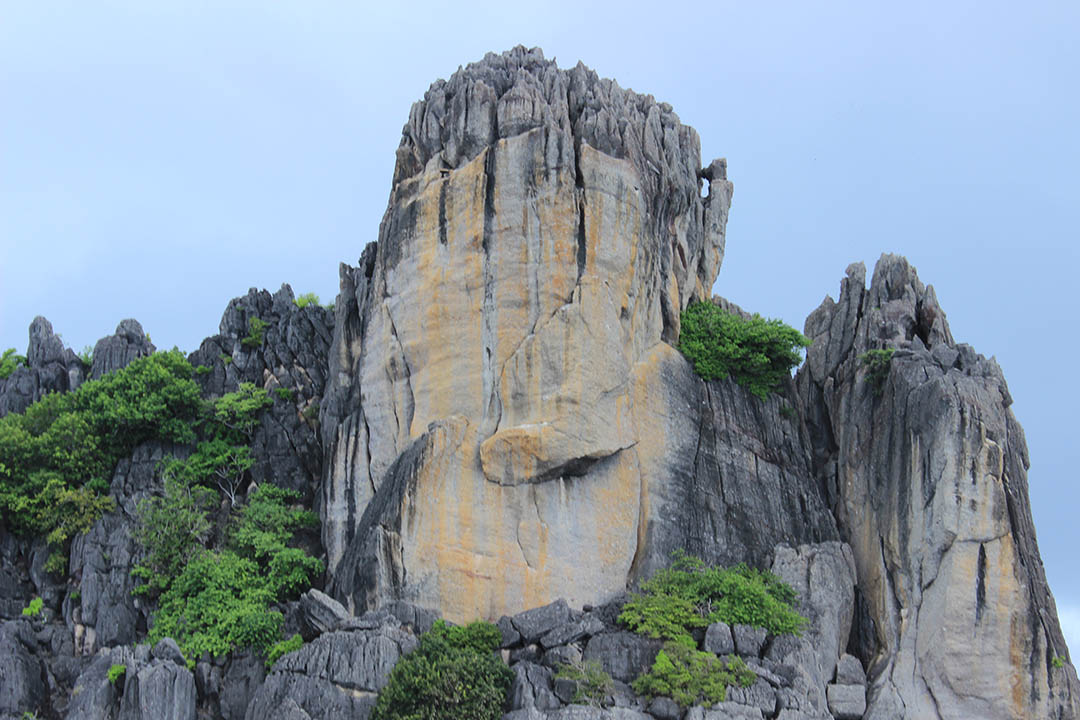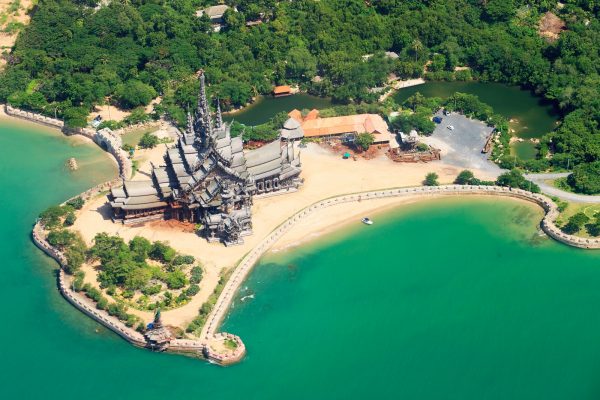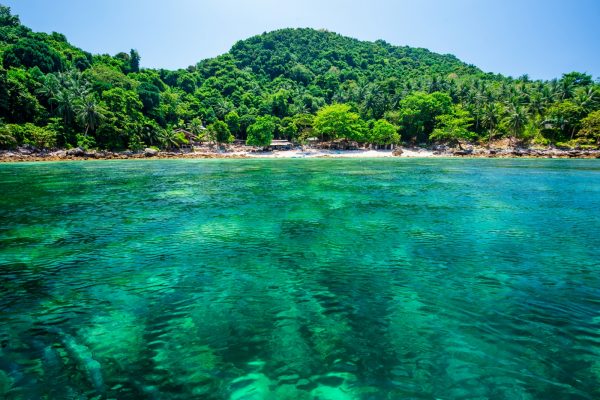
Ko Ngam Yai
“Chumphon Sea” is a diving spot which can remain the abundance of the natural resources very well. These natural resources include variety of fish, black corals, endless jungle of sea anemone, and giant whale sharks. “Mu Ko Ngam,” a popular diving place in Chumphon Province, is where most teenagers go in their holiday. It takes around an hour to “Mu Ko Ngam” by boat. Compared to the sea water in Andaman Sea, the sea water in the Gulf of Thailand is not that clear and the color of the corals is slightly lighter. Since “Mu Ko Ngam” is in the area of the Gulf of Thailand, surrounded with various types of coral reefs, which is hard to found in other diving places, and is the habitat of many sea animals, the divers often find large schools of Red snapper, Trevally, and Yellowstripe scad swimming around them. There are 3 islands and a pile of stone in “Mu Ko Ngam.” They are Ngam Noi Island, Ngam Yai Island, Lak Ngam Island, and Hin Lak Ngam or Hin Pae. Ngam Yai Island is the highlight of “Mu Ko Ngam” because it is the famous diving spot with coral reefs, piles of stone lined paralleling with the island, and small cave under the sea. There is no beach to walk in Ko Ngam Yai but a steep and high cliff, making Ngam Yai Island a “swift’s nest concession island” of Thailand. If the divers visit the island, they will find a lot of beautiful creatures living together in the nature, such as skunk clownfish, parrotfish, barracuda, butterfly fish, angelfish, turtles, gorgonian shrimps, and nudibranch. The most beautiful creatures of all are hard corals, sponges, gorgonians, and thick jungle of sea anemone. In some place, these sea creatures cover a large area so that fish can live there as home. This can make balance in the sea very well. Ngam Noi Island is a little southward from Ngam Yai Island. It is a ridge of island with small piles of stone spreading paralleling with the island, which is covered with Zoantharia and leather corals. The sea animals here have a lot of diversity. There are big Moray eels, groupers, batfish, stingrays, gorgonian shrimps, nudibranch, and sea turtles swimming around the coral reef.



